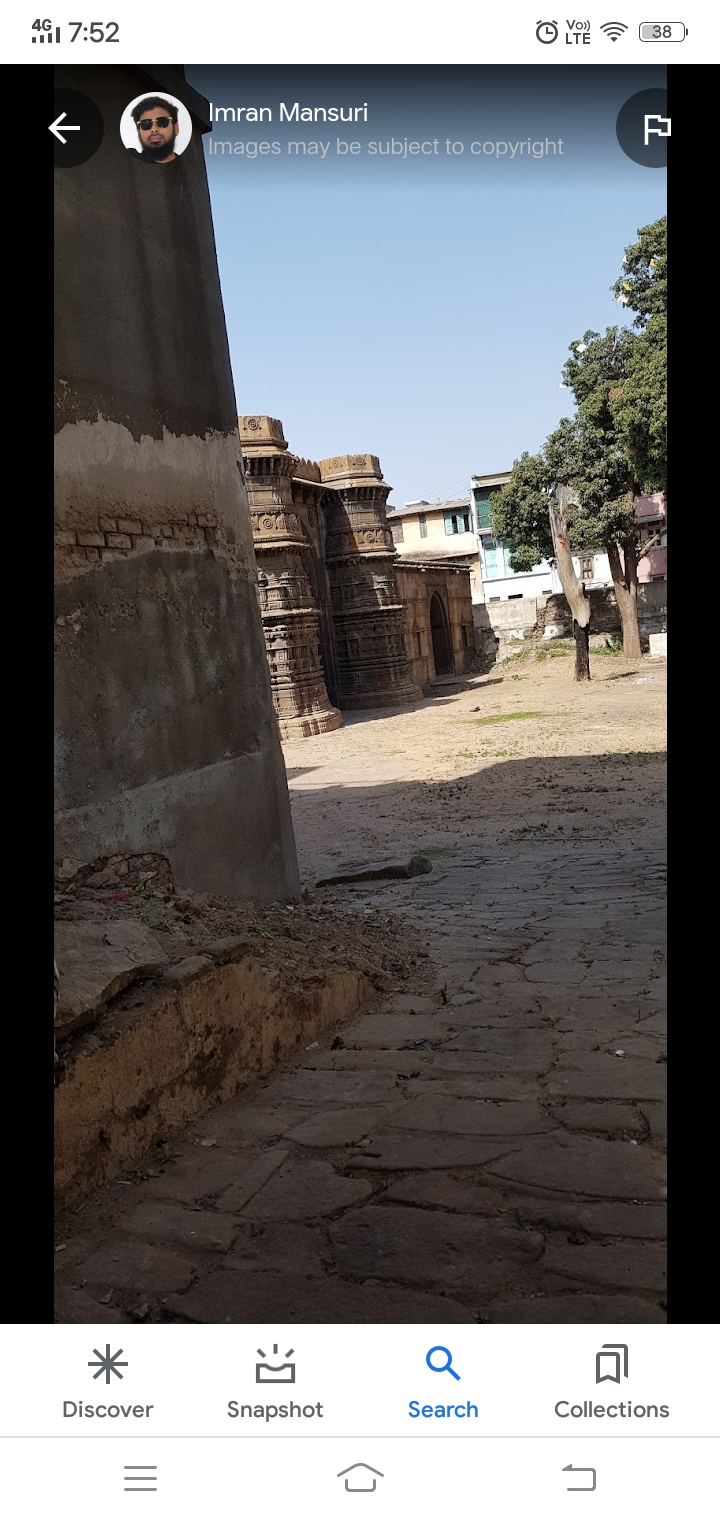
Sarangpur ki Masjid (Queen Mosque)
Sarangpur ki Masjid or Queen's mosque, also known as the Malik Sarang mosque or Rani Mosque was built c.1530 by Malik Quivam ul Mulk, the governor of Ahmadabad .
Queen’s Mosque in Sarangpur was built by Malik Qiwam ’ul-Mulk Sarang. He was a Rajput converted to Islam under the influence of the Sultan and later rose to the status of the Governor of Ahmadabad, in AD 1521, during the reign of Muzaffar Shah II. The Masjid probably built during the second half of the fifteenth century measures 14.56 meters by 11.13 meters on the inside and has five large domes over as many square areas in the sanctuary, entered into through fine arched gateways, the central one being large, higherand with a richly carved arch-rim; The two large-sized minars standing on either side of the centre or now unfortunately extant up to the roof only, resemble closely those of Bibi-Ki-Masjid of Rajpur. The front wall behind the minars is raised on the central portion to about 2.74 meters along a stretch of 12.80 meters but on the interior, there is only a kind of balcony to the gallery resting on pillars of normal height. This is further connected with the gallery under the central dome. The front wall has four perforated windows while on the back wall there are six, with two at the each of side walls. The tomb is juxtaposed in front of the Masjid, as in the case of Rani Sipri’s or Sayyid ‘Uthman’s and stands on a base 22.86 meters square. The outer fringe has 21.74 meters interspace which had four pairs of coupled pillars on each face with the corner angles totally closed in stone walling while the 20.42 meters inner area was supported by squares of thirty-six, twenty-eight, twenty and twelve pillars raised to 3.96 meters height throughout up to the roof, the innermost square carrying the dome over it. This had also jali-worked screens around it with an entrance on the south side. Twenty pillars which are in the inner square and carries an upper projection has a long gallery there around the central high dome, and has also small corner domes. The two tombs in the rauda had long since been stripped of their marble veneer. While one of them is obviously of Malik Sarang, the other is usually taken to be that of his wife. In its original condition, the rauda would have been very attractive.

